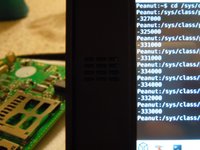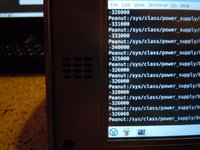bismuthdrummer
Active Member
- Joined
- May 13, 2011
- Messages
- 534
Something I'd wondered when I first received my 1 GHz was whether the newer screen used less power than the older one since the screen itself was darker. Today I had the opportunity to test after swapping the screens between the CircuitCo (CC) and 1 GHz Rebirth Pandoras.
This is admittedly a very primitive testing method. First, I turned the screens all the way off and checked the current draw off the battery. The 1 GHz was higher, as expected, probably about 170 mA versus the CC's 150 mA. Then I turned the screens all the way up, and the power usage was still higher, 320 mA to about 270 mA. But my memory reminded me that the former number used to be about 350 mA idle on full brightness for my 1 GHz, and about 250 mA idle for the CC. My memory might be failing me, so anyone with their respective units can confirm or refute as appropriate.
However, the final test is so irrefutable to my eyes that I feel obligated to report that the older screens draw less power for the brightness, and significantly so. Leaving the CC on full brightness I matched the Pandoras in brightness as best I could, and seeing that there wasn't a setting exactly the same, I set the 1 GHz slightly brighter. At these settings, the 1 GHz draws about 250 mA off the battery, while the CC draws about 270 mA (same as above). Below are the photographs for inspection, again perhaps not the most scientifically conclusive results due to the methodology but I think others' perceptions will agree.
There was no overclocking or underclocking on either unit, no sound coming out of the speakers, wifi/bluetooth radios turned off for both, USB host and networking turned on for both (but nothing plugged into either USB port), SuperZaxxon 1.53 on both, so I cannot imagine what else could cause the difference. Hopefully some of those here with the knowledge can elucidate on why or direct me on other tests to try, provided they don't involve me taking apart either Pandora again.
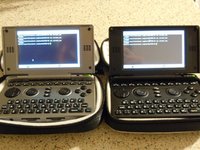
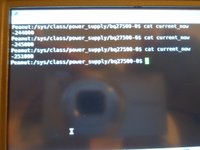
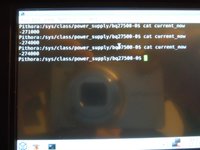
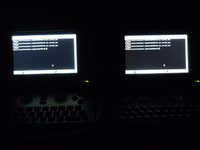
EDIT: Added the last shot in the dark to better compare the brightness.
This is admittedly a very primitive testing method. First, I turned the screens all the way off and checked the current draw off the battery. The 1 GHz was higher, as expected, probably about 170 mA versus the CC's 150 mA. Then I turned the screens all the way up, and the power usage was still higher, 320 mA to about 270 mA. But my memory reminded me that the former number used to be about 350 mA idle on full brightness for my 1 GHz, and about 250 mA idle for the CC. My memory might be failing me, so anyone with their respective units can confirm or refute as appropriate.
However, the final test is so irrefutable to my eyes that I feel obligated to report that the older screens draw less power for the brightness, and significantly so. Leaving the CC on full brightness I matched the Pandoras in brightness as best I could, and seeing that there wasn't a setting exactly the same, I set the 1 GHz slightly brighter. At these settings, the 1 GHz draws about 250 mA off the battery, while the CC draws about 270 mA (same as above). Below are the photographs for inspection, again perhaps not the most scientifically conclusive results due to the methodology but I think others' perceptions will agree.
There was no overclocking or underclocking on either unit, no sound coming out of the speakers, wifi/bluetooth radios turned off for both, USB host and networking turned on for both (but nothing plugged into either USB port), SuperZaxxon 1.53 on both, so I cannot imagine what else could cause the difference. Hopefully some of those here with the knowledge can elucidate on why or direct me on other tests to try, provided they don't involve me taking apart either Pandora again.




EDIT: Added the last shot in the dark to better compare the brightness.
Last edited by a moderator:




